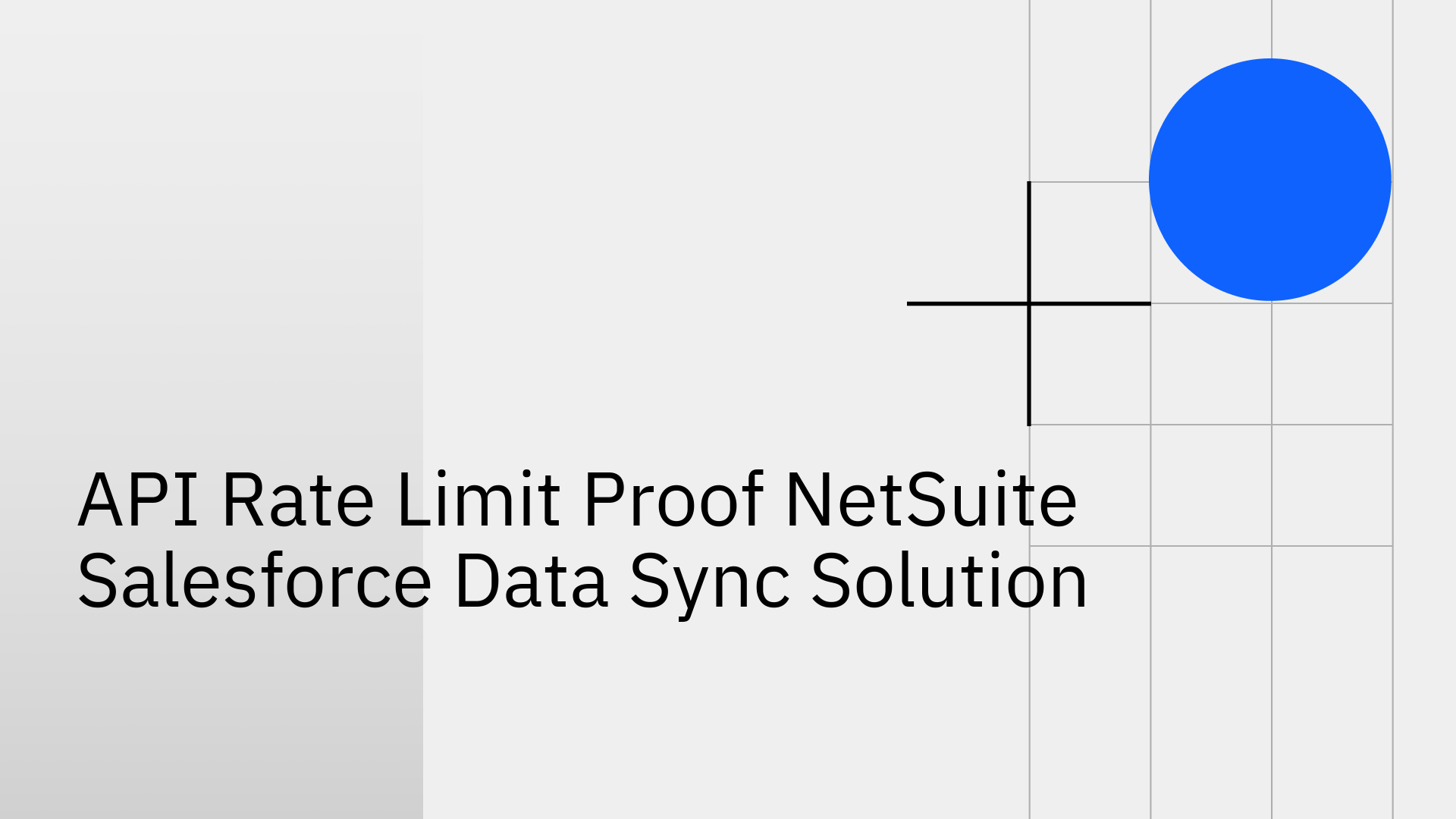
In today’s competitive landscape, your business relies on NetSuite for ERP and Salesforce for CRM. While powerful independently, they often exist as disconnected data silos, forcing your teams into a cycle of manual data entry, creating operational bottlenecks, and generating inaccurate reports.
For the majority of businesses navigating this dual-platform reality, a seamless netsuite salesforce data sync isn't a luxury, it's a critical component for growth. While our data shows that 68% of mid-market companies use both systems, a mere 27% have achieved a true, real-time integration [1].
The primary technical barrier preventing this essential union?
The restrictive and often unforgiving API rate limits built into the platforms themselves. Without an intelligent solution designed to navigate these constraints, any integration is a ticking time bomb, destined to fail when you can least afford it.
API rate limits are the "rules of the road" imposed by platforms like Salesforce and NetSuite, governing how many API calls an application can make within a specific timeframe. These limits are not arbitrary; they are essential for maintaining the health of the multi-tenant environment by:
Navigating these restrictions is the central challenge of modern integration, demanding sophisticated strategies for overcoming API rate limits to ensure data flows without interruption.
Exceeding API limits is not a minor technical glitch; it's an operational disaster that brings business processes to a sudden halt. When your integration hits a quota, such as Salesforce's daily limit of 100,000 API requests for Enterprise Edition orgs or the 15,000 batch limit for its Bulk API [6], the consequences are immediate and catastrophic:
Building a custom integration offers the allure of complete flexibility. However, this path is fraught with peril. The initial development and ongoing maintenance consume immense engineering resources and budget [3]. More importantly, these homegrown solutions are notoriously brittle. Lacking the sophisticated error handling, intelligent queuing, and dynamic API management of a dedicated platform, they are highly susceptible to hitting rate limits and causing catastrophic data failures.
Integration Platform as a Service (iPaaS) tools like MuleSoft offer a more structured alternative to custom code, providing frameworks and pre-built connectors [4]. However, these platforms are generalists, not specialists. Configuring them for a high-stakes, real-time netsuite salesforce data sync often requires niche expertise and complex workarounds. While more robust than custom code, they still operate within the rigid constraints of platform APIs and can easily falter under the pressure of high-frequency updates. To succeed, you must optimize NetSuite Salesforce integration with a tool designed for the job.
The plug-and-play simplicity of native connectors seems attractive, but they are often too rigid for the dynamic needs of a growing business [7]. Their fundamental weakness is a reliance on scheduled polling—periodically checking for changes. This method is grossly inefficient with API calls and, by definition, can never provide true real-time synchronization. The inherent data lag makes these connectors a non-starter for any business-critical process that depends on up-to-the-second accuracy.
To build a netsuite salesforce data sync that is both resilient and performant, your architecture must be founded on several core principles that generic tools overlook:
Above all, the cornerstone is a true, real-time bi-directional sync engine. This prevents conflicting updates and the infinite loops that plague less advanced solutions, ensuring absolute data integrity.
Stacksync is the purpose-built platform engineered to conquer the challenges of a mission-critical netsuite salesforce data sync. Our architecture was designed from day one to deliver true real-time, bi-directional synchronization that intelligently navigates API limits without requiring any manual quota management from your team. We provide a definitive way to bypass Salesforce API limits by dynamically selecting the most efficient API for the task and orchestrating data flow with sub-second performance. The result is enterprise-grade reliability for your most crucial data, guaranteed.
By automating the data flow between NetSuite and Salesforce, you eradicate tedious manual reconciliation and accelerate your entire business cycle. An automated lead-to-order process, for instance, not only improves quoting accuracy but dramatically shortens sales cycles and enhances the customer experience [5]. As outlined in our 2025 integration guide, this level of automation can lead to a 23% reduction in operational costs by freeing your team to focus on high-value activities instead of manual data entry.
A flawless, real-time data sync establishes a single source of truth, empowering your sales, finance, and operations teams with the accurate data needed for fast, intelligent decision-making. This data consistency translates directly into superior customer experiences. When your support agent has a customer's complete financial history at their fingertips, or a sales rep knows the exact order status in real time, you build trust and loyalty. Our real-time sync guide for 2025 shows that businesses with truly integrated systems see a remarkable 32% increase in customer satisfaction.
A perfect netsuite salesforce data sync is the backbone of a modern, efficient enterprise. However, API rate limits present a formidable obstacle that causes traditional integration methods to crumble under pressure. Custom code is a costly and fragile liability, generic iPaaS tools are unnecessarily complex, and native connectors are too slow and rigid for today's business demands.
The definitive solution is a purpose-built, API-aware platform architected for real-time, bi-directional synchronization. By intelligently managing every API call and guaranteeing data consistency, a platform like Stacksync future-proofs your core business operations, delivering enterprise-grade performance without the risk of devastating service disruptions.
Stop letting API limits dictate your operational efficiency. Explore our complete guide to Salesforce-NetSuite integration and start your 14-day free trial to experience a truly seamless, API-proof data sync.